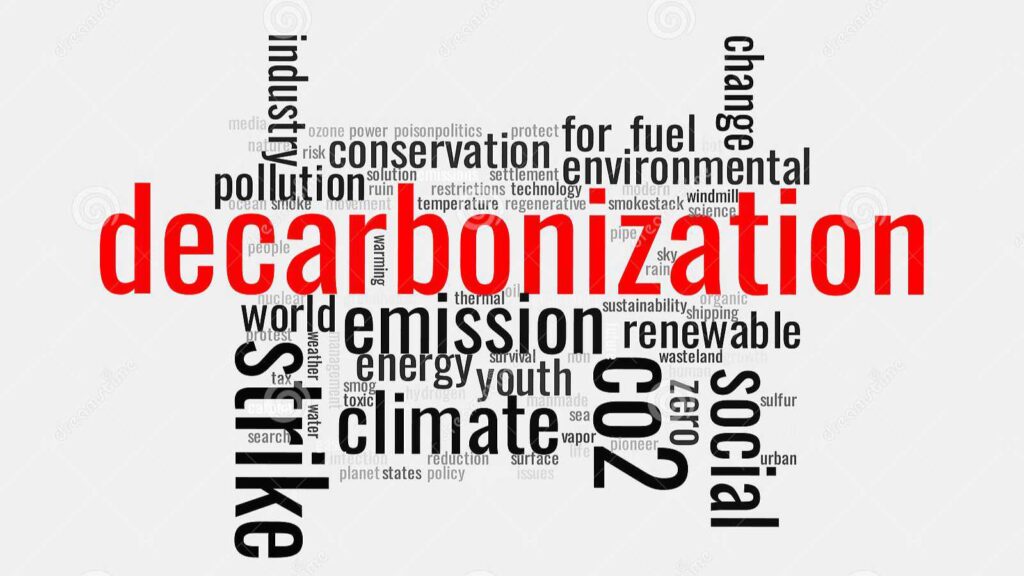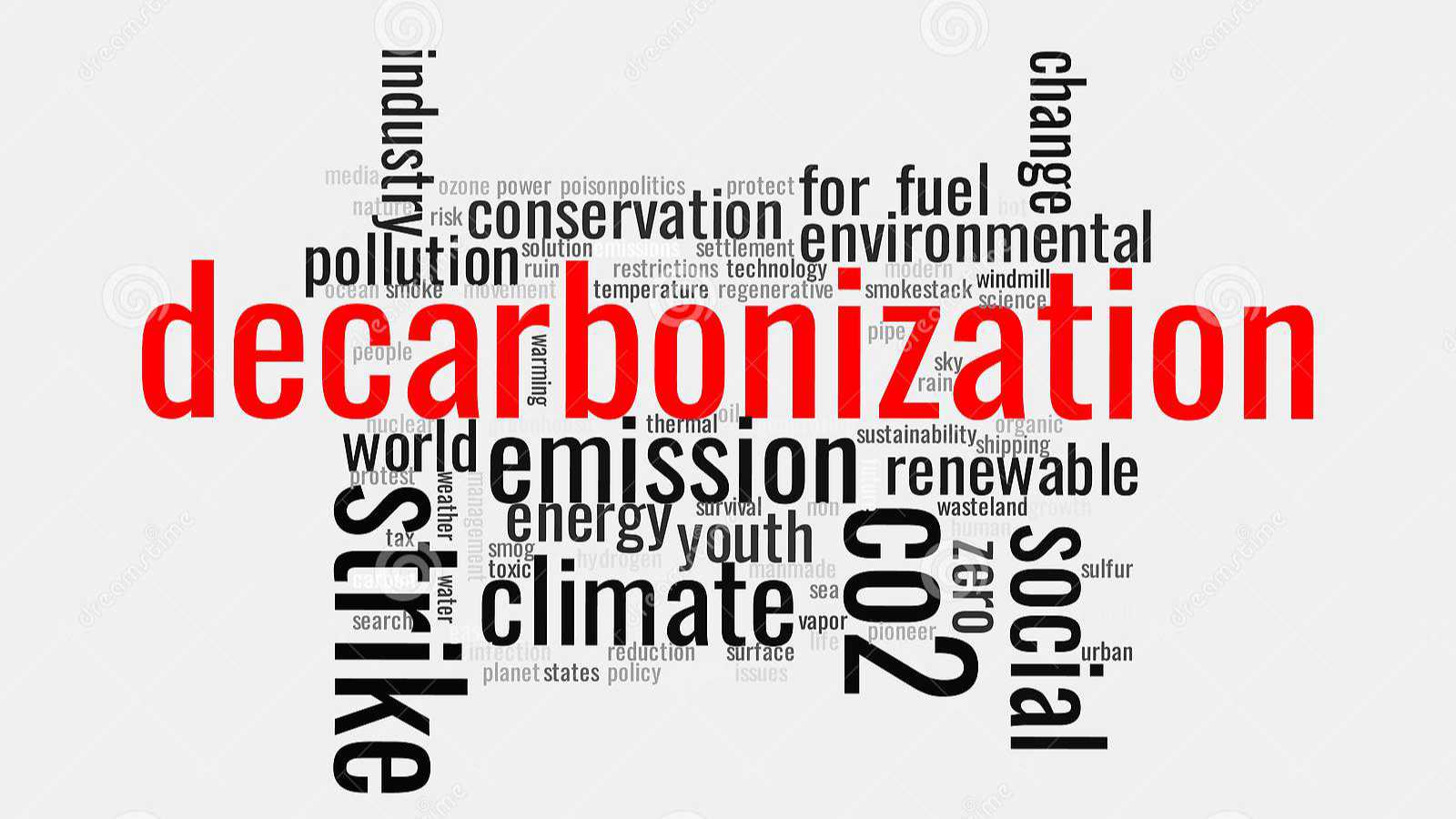The realist in me says that this transformation is and has been happening for a decade or more. Irrespective of any ecological and/or existential direness, which is debated hotly, the transition trajectory is probably consistent with other major transformations.

We have, however, with specific focus on consumer products, especially those sexy things attached to digital technologies and the Internet—not infrastructure, mind you—come to expect absurdly unrealistic diffusion periods. The adoption and diffusion of this extensive and transformative evolution may be unfolding exactly as it should. (After all, few earlier comparators were front-to-back structures displacing such an entrenched, profitable, and politically charged incumbents.)
Signs of encouragement that decarbonization is progressing
There are several encouraging signs that a decarbonized world is possible and transition is underway.
- Renewable Energy: The growth of renewable energy sources such as wind, solar, and geothermal has been significant in recent years.
- Electric vehicles: The increasing popularity of electric vehicles is also encouraging.
- Climate commitments: Many countries have made commitments to reduce their carbon emissions, such as through the Paris Agreement, aiming to limit global warming to well below 2°C above pre-industrial levels.
- Carbon pricing: Some countries and regions have implemented carbon pricing mechanisms, such as carbon taxes or emissions trading schemes, putting a price on carbon externalities.
- Technological advancements: Technology for carbon capture, storage, and utilization, which could help to reduce carbon emissions from industrial processes, has advanced significantly.
Of course, much more needs to be done to accelerate this transition and reduce the impact of climate change.
Nasty inhibitors to faster progress in decarbonization
Still, there are several structural inhibitors to (faster) transition. Key among them are:
- Fossil Fuel Subsidies: Governments around the world continue to subsidize and protect the fossil fuel industry.
- Limited Infrastructure: The infrastructure needed to support a carbon-free world, such as electric vehicle charging stations and renewable energy grids, is still limited, inhibiting consumer adoption.
- Political Inertia: Many politicians are reluctant to take action on climate change, fearing its unpopularity with constituents and short-term potential negative economic impact.
- High Initial Costs: While renewable energy costs have decreased significantly in recent years, the initial investment needed can still be prohibitively high.
- Lack of Public Awareness: Many people are still (willfully) unaware of the urgent need for the transition, making it harder to build public support for climate action.
Such structural inhibitors are challenging and addressing them will require significant political will—mainly—and investment. As the urgency of the climate crisis passes critical, expect to see more, panicked action.
Milestones achieved/coming to mark decarbonization progress
Several specific, critical milestones and targets for renewable energy have been established by governments and organizations around the world. These are intended to guide the transition to a carbon-free world and help ensure necessary infrastructural support for renewable energy sources.
The International Energy Agency (IEA) has called for a significant increase in renewable energy deployment, including a target of achieving 70% renewable energy in the global electricity mix by 2040.
Also at a global level, signatories to the Paris Agreement have committed to limiting global warming to well below 2°C above pre-industrial levels, with an aim to limit warming to 1.5°C. To achieve this goal, countries have submitted Nationally Determined Contributions (NDCs) that outline their targets for reducing greenhouse gas emissions, including targets for increasing renewable energy use. Most are and will fail. But they are a focus and benchmark. For example:
- European Union — The European Union has set a target of achieving at least 32% renewable energy in its energy mix by 2030, with the aim of reaching 50% by 2050.
- United States — The United States has set a target of achieving 100% clean electricity by 2035 and net-zero emissions by 2050.
- China — China has set a target of reaching peak carbon emissions by 2030 and achieving carbon neutrality by 2060.
Achievements, not politics, count on the way to decarbonize
While political posturing and international agreements are important, tangible progress towards climate commitments and carbon pricing is also being made.
- Renewable energy deployment: Deployment of renewable energy such as wind and solar has grown significantly in recent years, partly in response to declining costs and government incentives. Progress is particularly notable in countries such as China, the United States, and India.
- Carbon pricing mechanisms: Several countries and regions have put a price on the externality, carbon, through carbon tax or emissions trading scheme, incenting emission reduction. The European Union’s Emissions Trading System covering more than 10,000 installations in the power sector and energy-intensive industries, and Canada’s carbon pricing system, which puts a floor price on carbon emissions nationally, are two such examples.
- Green investment: ESG popularity and growing recognition of the risks associated with climate change have contributed to a significant increase in green investment in recent years. According to the Global Trends in Renewable Energy Investment 2021 report, global investment in renewable energy reached a record high of US$303.5 billion in 2020, despite the impact of the COVID19 pandemic.
- Corporate action: Under the rubric of ESG, many companies have set their own ambitious climate targets, including goals to achieve net-zero emissions by 2050 or earlier. Most heartening are those of transporters such as DHL. These targets are driving companies to invest in renewable energy, reduce their emissions, and adopt more sustainable practices. On a different note, insurers have begun factoring climate-related risks into their pricing, which is also affecting individual and corporate behaviour.
- Public awareness: There is growing—albeit at times grudging—public awareness of the urgent need to address climate change. This is a growing demand for action by governments and companies. Increased awareness is reflected in the expansion of climate-related protests, such as the youth-led Fridays for Future movement.
There is still so much more work to be done. But tangible progress is being made in several areas. And, by all accounts, it is accelerating. A strong argument can be made that the tipping point to aggressive development for supply expansion and demand will come (has come) as decarbonization itself shifts from an ecological imperative to an economic one.
Tracking the economic imperatives for decarbonization
The cost/price trajectory for essential infrastructure elements such as renewable energy and electric vehicles is expected to accelerate downward in the coming years. Technological advances, economies of scale, and increasing public and private investment are among the typical drivers.
- Renewable Energy: The cost of renewable energy sources such as wind and solar has already declined significantly and, according to the International Renewable Energy Agency (IRENA), the cost of renewable energy is expected to continue to decline. Onshore wind and solar PV are expected to be the cheapest sources of new electricity in most parts of the world by 2030.
- Energy Storage: The cost of energy storage technologies—critical to non-combustion sources, such as batteries—is also expected to decline further driven by advances in technology and increasing demand. Storage is crucial to level out supply peaks and valleys and ensure a reliable supply of electricity.
- Electric Vehicles: The cost of electric vehicles (EVs) is expected to decline in the coming years as a function of reduced OEM component costs and scale economies as demand increases. According to BloombergNEF, the cost of EV batteries is expected to decline by 58% between 2020 and 2030, making EVs increasingly cost-competitive with traditional gasoline-powered vehicles. This may even render government subsidization irrelevant as prices come in line with internal combustion alternatives.
- Green Hydrogen: Green hydrogen, produced from renewable energy sources, is also expected to become more cost-competitive in the coming years. According to a report by the Hydrogen Council, the cost of green hydrogen is expected to decline by up to 80% by 2030, making it a cost-competitive alternative to fossil fuels in several sectors.
Yet it may still “fail” to happen fast enough
The decarbonization transformation is complex and challenging—moreso than any previous similar situation, and several factors could yet cause it to fail or be unduly delayed. The primary challenges are:
- Political Will: Even in a market economy, this is the single-most troubling factor. Particularly in these tribalist, infantilized times, leadership at the political level has outsized import. If political leaders prioritize short-term economic interests over long-term environmental goals, weakening policies or hindering implementation—even if they are not acting on behalf of incumbents’ lobbies, the effects could be catastrophic.
- Economic Interests: Fossil fuel companies and other industries that rely on carbon-intensive activities (i.e., incumbents)
maywill resist efforts to transition to a carbon-free world. This will manifest in opposition to policies that aim to reduce carbon emissions, and slow continued investment in fossil fuels and other carbon-intensive activities. - Technological Limitations: While renewable energy technologies have advanced significantly in recent years, there are still limitations and challenges to overcome. There always are. This will delay progress.
- Social Resistance: Change and transformation of this magnitude is scary to individuals. Anybody whose household thrives, let alone survives, as a direct result of fossil fuels will at the very least be anxious and at worst be outright hostile to any transition. On this economic basis, employees will have common cause with employers (see #2, above) irrespective of moral qualms.
- International Cooperation: The transition to a carbon-free world will require international acceptance, cooperation, and coordination. Climate change, after all, is a global challenge that requires a global response. But entrenched grievance, animosity, and entitlement perceptions have a way of interfering. Never mind geopolitical tensions, trade disputes, and other factors that could undermine international cooperation on climate change.
A diffusion and adoption comparison for perspective
Is decarbonization happening unusually slowly? Based on some historical precedents, none of which had the same kind of incumbency challenges, it would appear not.
- The Wheel (3500 BC): The wheel revolutionized transportation, enabling movement of goods over long distances. It took several centuries to become widely adopted, though we know for sure that by 1500 BC, it was in use in many parts of the world.
- Writing (3000 BC): The invention of writing took several centuries to become widely adopted, but by 2000 BC, it was in use in several civilizations.
- Printing Press (1440): The printing press revolutionized production and dissemination of written materials. It took decades for the printing press to become widely adopted, and only in the 16th-century transformed the European book industry.
- Steam Engine (1712): The steam engine revolutionized transportation and industry. It took several decades for the steam engine to become widely adopted. By the mid-19th-century, it had reoriented the global economy.
- Electricity (late 19th-century): The invention and commercialization of electricity transformed industry, transportation, and communication. It took half a century, until the mid-20th-century, for it to become a ubiquitous part of modern life and even longer to reach all parts of even advanced nations. According to historical data, it took approximately 25 years for electricity to be adopted by 20% of households in the United States, 50 years to be adopted by 50% of households, and 70 years to be adopted by 95% of households.
- Personal Computers (1970s-80s): Personal computers transformed communication, commerce, and entertainment. It took only a few decades for personal computers to become widely adopted. According to a report by the Pew Research Center, it took approximately 10 years for personal computers to be adopted by 20% of households in the United States, 15 years to be adopted by 50% of households, and 25 years to be adopted by 95% of households.
- Internet (1990s): The Internet transformed communication, commerce, and social interaction. It took only a few years for the internet to become widely adopted. Its spread globally, on the back of earlier telecommunications technologies, was near equally rapid. Pew Research Center reports that it took approximately 4 years for the Internet to be adopted by 20% of households in the United States, 7 years to be adopted by 50% of households, and 14 years to be adopted by 95% of households.
- Smartphones (2000s): It took only a few years for smartphones to become widely adopted globally. According to a report by the Pew Research Center, it took approximately 10 years for cell phones to be adopted by 20% of households in the United States, 25 years to be adopted by 50% of households, and 35 years to be adopted by 95% of households. It took approximately 5 years for smartphones to be adopted by 20% of households in the United States, 10 years to be adopted by 50% of households, and 15 years to be adopted by 95% of households.
- A few other comparators could include:
- Development of the electrical service grid in the United States was a gradual process that spanned several decades.
- It took approximately 20 years for color televisions to be adopted by 50% of households in the United States.
- It took approximately 25 years for automobiles to be adopted by 50% of households in the United States.
- Buildout of the gasoline automobile infrastructure of filling stations in the United States began in the early 1900s and was largely completed about 25-years later in the 1930s.
Ultimately, in 2023, there is cause to believe technology and social/economic drivers are aligning to make the transformation to a decarbonized world. One could even argue it’s happening at an historically reasonable rate.
None of that, of course, alters the risk profile of the context for this transformation. “Will it be too late?” is an entirely different question and problem.
Institute X is a transformation leadership consultancy and transformation/change leader coaching firm. One of its online presences is The Change Playbook. Be sure to check out the abundance of practical and pragmatic guidance. Subscribe to receive notifications of new posts and fresh content.


Leave a Reply